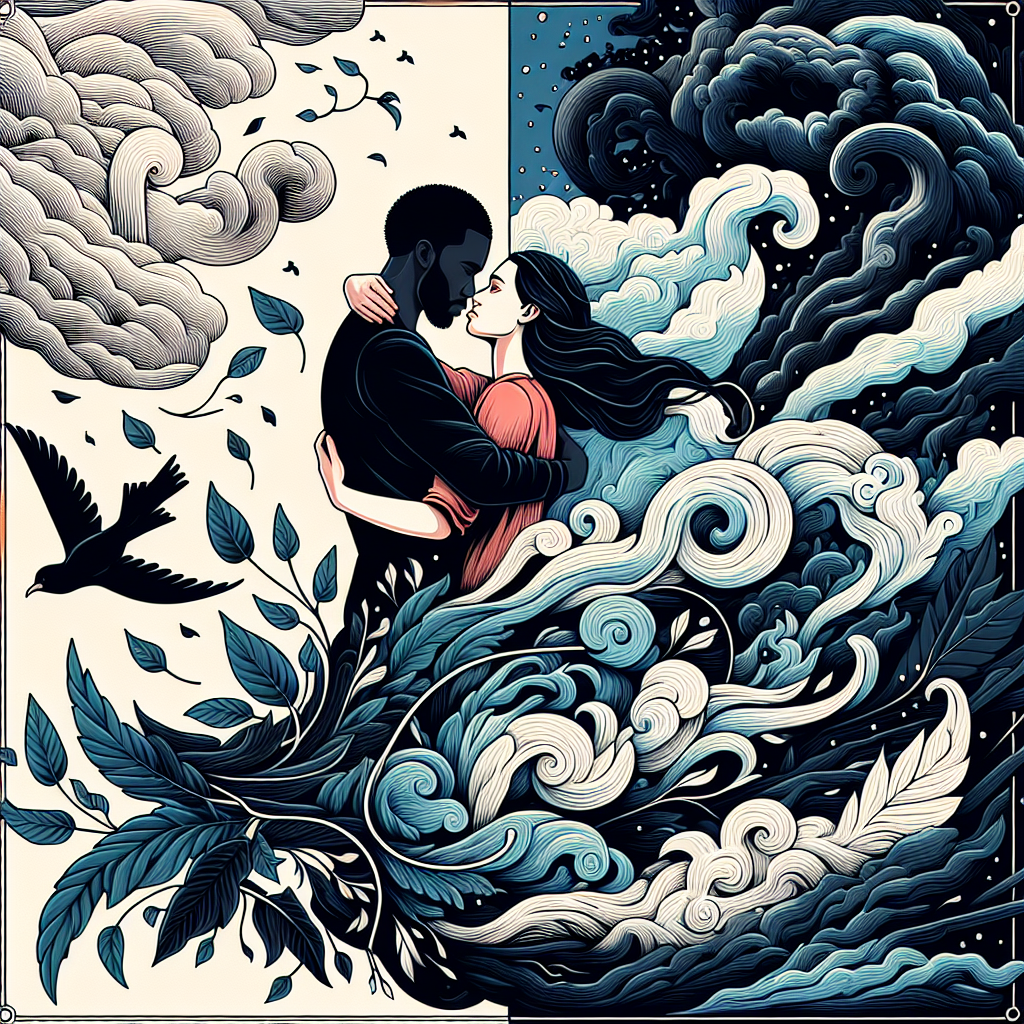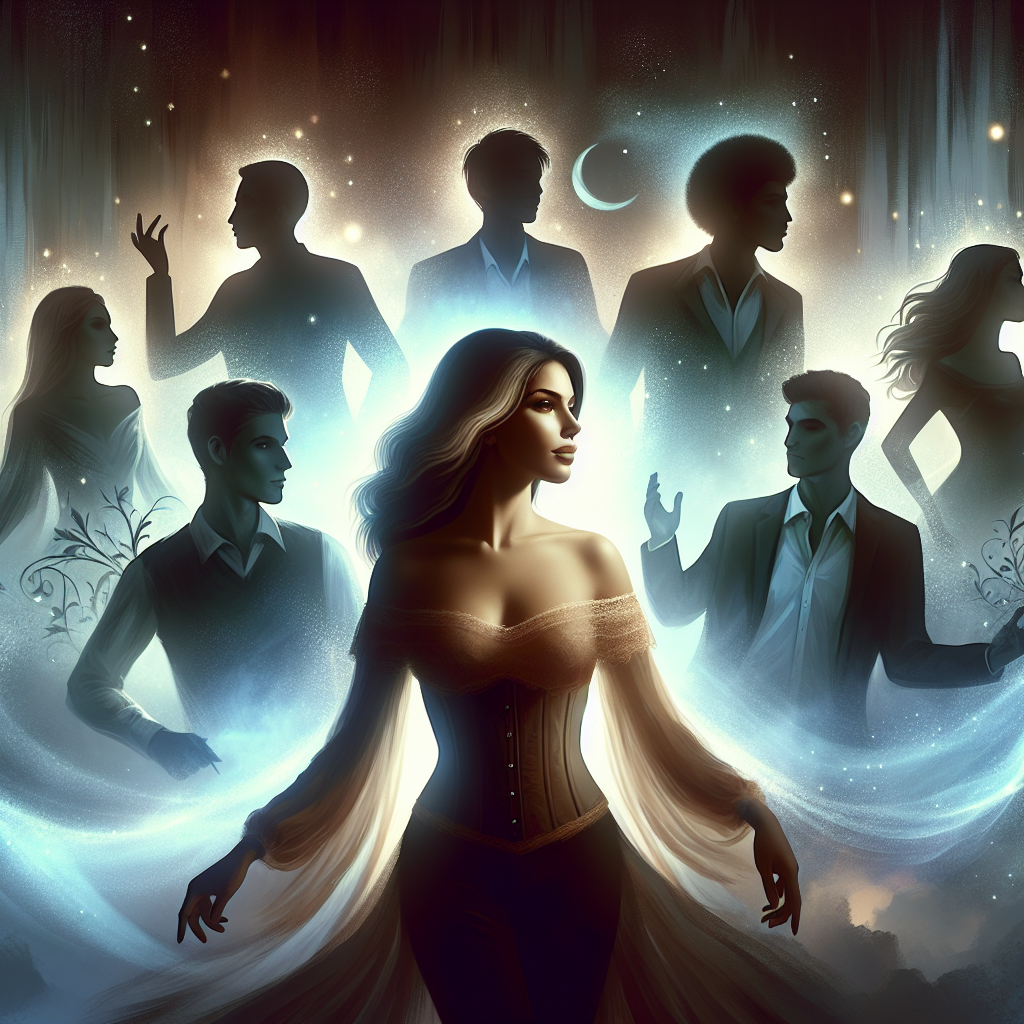Crafting Compelling Characters: The Art of Balancing Protagonists and Antagonists in Romance Fiction
Meta Description: Discover how to create dynamic protagonists and compelling antagonists in romance fiction. Learn character development techniques that drive plot, create tension, and captivate readers.
Romance fiction thrives on the eternal dance between love and obstacles, hope and conflict. At the heart of every memorable romance lies a carefully crafted relationship between protagonists who seek love and the antagonistic forces that challenge their journey. Understanding this delicate balance is crucial for any writer seeking to create stories that resonate deeply with readers and keep them emotionally invested from first page to last.
Understanding the Romance Protagonist: More Than Just a Love Interest
The Heart of Your Story
The protagonist serves as your reader's emotional anchor—the character through whose eyes we experience the transformative power of love. In romance fiction, protagonists carry the dual responsibility of pursuing romantic fulfillment while undergoing meaningful personal growth. They're not merely vessels for wish fulfillment; they're complex individuals whose vulnerabilities and strengths mirror the human experience.
Effective romance protagonists share several key characteristics:
- Authentic relatability: They face genuine challenges that resonate with readers' real-world experiences
- Compelling flaws: Imperfections that create opportunities for growth and make characters feel human
- Clear motivations: Understandable desires that drive their actions throughout the story
- Emotional depth: The capacity for genuine change and self-discovery
The Journey of Transformation
What sets romance protagonists apart is their capacity for evolution. They begin the story as incomplete individuals—perhaps guarded by past hurts, limited by self-doubt, or constrained by external circumstances. Through the crucible of love and conflict, they discover hidden strengths, confront their fears, and emerge as more authentic versions of themselves.
This transformation isn't merely about finding romantic love; it's about becoming worthy of it through personal growth and self-acceptance.
The Antagonist's Essential Role: Creating Meaningful Conflict
Beyond Simple Villainy
Antagonists in romance fiction serve a far more nuanced purpose than merely creating obstacles. They're the catalyst that forces protagonists to confront their limitations, question their assumptions, and fight for what they truly desire. The most effective antagonists aren't necessarily evil—they're simply positioned in opposition to the protagonist's goals, creating the tension necessary for compelling storytelling.
Romance antagonists can take many forms:
- Rival lovers who compete for the same romantic interest
- Societal expectations that forbid or complicate the central relationship
- Internal demons such as fear, trauma, or self-doubt
- Well-meaning family members whose interference stems from genuine concern
- Professional obligations that threaten to separate the lovers
The Psychology of Opposition
The best antagonists possess clear, understandable motivations for their actions. They're not obstacles for the sake of creating drama; they represent genuine challenges that the protagonist must overcome to achieve growth. This might mean facing a manipulative ex-partner who represents the protagonist's pattern of choosing the wrong people, or confronting family disapproval that forces them to stand up for their own happiness.
The Dynamic Relationship: How Conflict Drives Romance
Creating Narrative Tension
The interplay between protagonist and antagonist creates the essential tension that keeps readers engaged. Without meaningful opposition, romance becomes too easy, too predictable. The antagonist ensures that love must be fought for, earned, and proven worthy of the struggle.
This dynamic serves several crucial narrative functions:
- Plot advancement: Antagonistic forces create events that move the story forward
- Character revelation: Conflict reveals true character under pressure
- Emotional investment: Readers become more invested when protagonists face genuine challenges
- Satisfying resolution: Overcoming meaningful obstacles makes the eventual triumph more rewarding
Internal vs. External Antagonists
The most sophisticated romance novels often feature both internal and external antagonistic forces. External antagonists create obvious, visible conflicts—the disapproving parent, the scheming rival, the demanding career. Internal antagonists are more subtle but equally powerful—the protagonist's own fears, insecurities, or past traumas that prevent them from accepting love.
The magic happens when external conflicts mirror and amplify internal struggles, creating a cohesive narrative where every obstacle serves the larger theme of personal growth and romantic fulfillment.
Character Development Strategies for Romance Writers
Building Authentic Protagonists
Creating memorable protagonists requires balancing strength with vulnerability. Readers want to admire these characters while also relating to their struggles. Consider these development strategies:
Establish clear backstory: Past experiences should inform present behavior without overwhelming the current narrative. A protagonist's history explains their fears and desires without excusing problematic behavior.
Create meaningful stakes: What does your protagonist risk by pursuing love? What do they stand to gain? The higher the stakes, the more invested readers become.
Show growth through action: Character development should be demonstrated through choices and behavior, not just internal monologue or exposition.
Crafting Compelling Antagonists
Effective antagonists require just as much development as protagonists. They need:
Logical motivations: Even antagonistic actions should stem from understandable desires or beliefs Personal connection: The best conflicts are personal, with antagonists who have genuine relationships with the protagonists Moments of humanity: Showing antagonists' vulnerabilities or reasonable concerns adds depth and complexity
The Reader's Journey: Creating Emotional Investment
Identification and Empathy
Readers invest emotionally in romance fiction when they can see themselves in the characters' struggles. This identification doesn't require identical circumstances—it requires emotional authenticity. A billionaire protagonist might face obstacles that a typical reader never will, but the fear of vulnerability, the desire for acceptance, and the hope for lasting love are universal experiences.
The Satisfaction of Resolution
The ultimate payoff in romance fiction comes when protagonists overcome both external obstacles and internal barriers to achieve their happy ending. This resolution feels earned when the conflicts have been meaningful and the growth genuine. Readers experience vicarious satisfaction when characters they've grown to love finally claim the happiness they've fought to achieve.
Conclusion: The Perfect Balance
Masterful romance fiction requires a delicate balance between protagonists readers can love and antagonists who challenge them meaningfully. Neither element can exist effectively without the other. Protagonists without worthy opponents become passive and uninteresting; antagonists without compelling protagonists to challenge become mere plot devices.
The art lies in creating characters whose conflicts feel inevitable, whose growth seems both surprising and logical, and whose eventual triumph provides the emotional catharsis that defines great romance fiction. When writers achieve this balance, they create stories that don't just entertain—they illuminate the universal human experience of overcoming obstacles to find love, acceptance, and personal fulfillment.
By understanding the symbiotic relationship between protagonists and antagonists, romance writers can craft stories that resonate deeply with readers, creating the emotional connections that transform casual readers into devoted fans. The journey from conflict to resolution, from struggle to triumph, from loneliness to love—this is the heart of romance fiction, and it beats strongest when protagonists and antagonists dance together in perfect, tension-filled harmony.
💝 Ready to Explore More Romance?
If you enjoyed this article about romance writing, discover thousands of captivating love stories on our platform.
Download App













